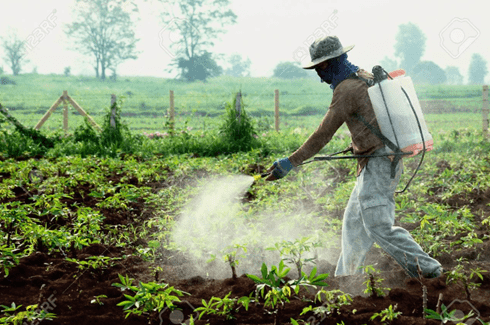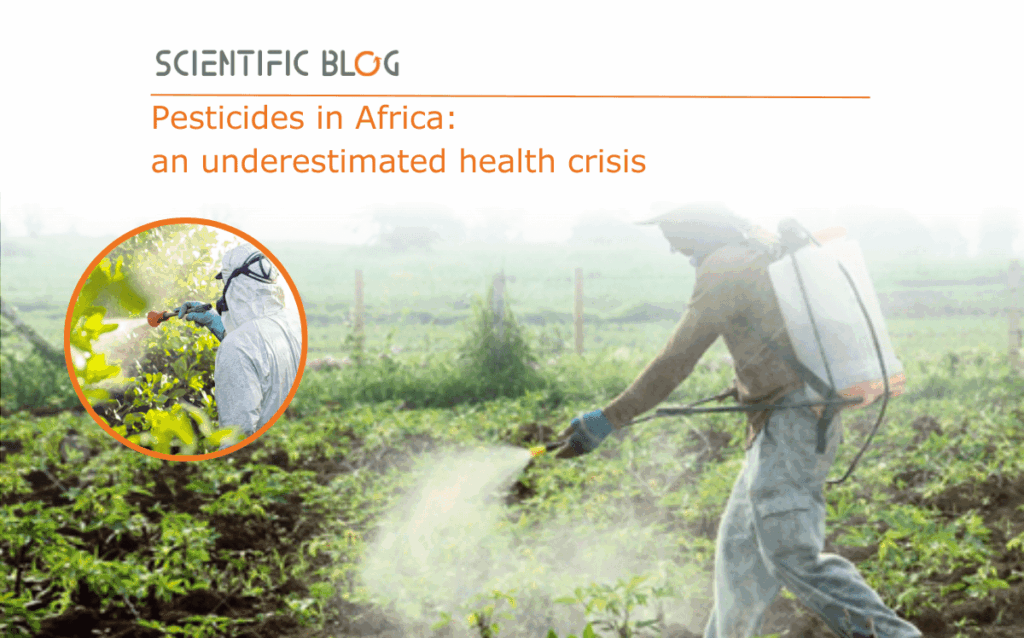The widespread use of pesticides in Africa has become a major source of concern for both food security and public health. Although these products were originally designed to protect crops and improve agricultural yields, their uncontrolled and often inappropriate use has dramatic consequences for populations, ecosystems and biodiversity. This silent but growing health crisis calls for urgent action.
Increasing and poorly regulated use of pesticides
In recent decades, Africa, particularly sub-Saharan Africa, has seen an intensification in pesticide use. This growth is linked to demographic pressure, the need to produce more to feed populations, and the influence of international markets that demand pest-free products.
However, this increase has taken place without an adequate regulatory framework. Many pesticides that are banned elsewhere, such as parathion, DDT and atrazine, continue to be used on the continent. For example, according to the NGO PAN Africa, nearly 60% of pesticides sold in Africa are classified as hazardous by the World Health Organisation (WHO).
In 2020, the European Union exported more than 81,000 tonnes of pesticides banned on its own territory to developing countries, including several African countries (source: Public Eye & Unearthed, 2020).
Alarming health consequences
Lack of training, unclear labelling (often written in languages not spoken locally) and a lack of personal protective equipment directly expose farmers and their families to the risk of poisoning.
Specific examples:
- A study conducted in Côte d’Ivoire (2019) revealed that more than 80% of cocoa producers suffered from headaches, vomiting or respiratory problems following exposure to pesticides.
- In Senegal, a survey by the Poison Control Centre recorded hundreds of cases of acute poisoning linked to the inappropriate use of pesticides between 2015 and 2020.
The long-term consequences are also dire: cancer, neurodegenerative diseases (such as Parkinson’s), hormonal disorders, infertility and birth defects.
A devastating environmental impact
Pesticides contaminate soil, groundwater and waterways. Beneficial insects, such as bees, which are essential for pollination, are being decimated. In West Africa, beekeepers have reported a 60% decline in their bee colonies in less than ten years. The knock-on effects are manifold:
- Ecosystem imbalance.
- The emergence of resistance in pests, leading to increased pesticide use.
- Long-term reduction in soil productivity.
A danger for European farm workers and florists
An often overlooked example of the problematic use of pesticides is the intensive cultivation of cut flowers in East Africa, particularly in Kenya, the main exporter to Europe. On the shores of Lake Naivasha, hundreds of hectares of greenhouses use mixtures of pesticides, some of which are banned in Europe, on a daily basis to meet the aesthetic requirements of buyers. Farm workers, who are often poorly paid and inadequately trained, handle these products without personal protective equipment (gloves, masks, overalls), exposing them to serious health risks such as chronic headaches, miscarriages, infertility and neurological disorders. This reality is illustrated by the photo above, showing a worker spraying pesticides without any protection.
But the consequences do not stop at Africa’s borders: European florists, who handle these freshly treated flowers on a daily basis, inhale persistent chemical residues. In France, the Netherlands and Germany, several professionals in the floral sector have reported cases of dermatitis, asthma and even hormonal disorders linked to prolonged handling of these potentially contaminated stems. These situations highlight the urgent need for strict traceability, labelling of the products used, and a harmonised global regulatory framework, including non-food crops. Without these measures, production and distribution chains will remain dangerous for both African workers and European professionals.
What are the solutions? More resilient and sustainable agriculture
1. Strengthening regulations:
- Ban the import and sale of pesticides classified as hazardous by the FAO/WHO.
- Harmonise phytosanitary policies at regional level (e.g. ECOWAS).
2. Training and awareness-raising:
- Train farmers in the rational use of pesticides.
- Promote affordable personal protective equipment (PPE).
3. Environmentally friendly alternatives:
- Integrated pest management (biocontrol, crop rotation).
- Organic farming and agroecology. Example: in Burkina Faso, agricultural cooperatives use neem (Azadirachta indica), a local plant with insecticidal properties, to replace chemical products.
4. Epidemiological surveillance:
- Creation of national pesticide observatories.
- Systems for monitoring health and environmental effects.
Conclusion :
Africa is at a turning point. It must either continue with an intensive, chemical-based agricultural model, to the detriment of human health and the environment, or opt for a more sustainable, resilient and environmentally friendly form of agriculture.
This transformation cannot happen without political will, international cooperation and community- al commitment. It is urgent to view this crisis not as inevitable, but as an opportunity to rethink agricultural development in Africa, placing public health at the heart of priorities.




